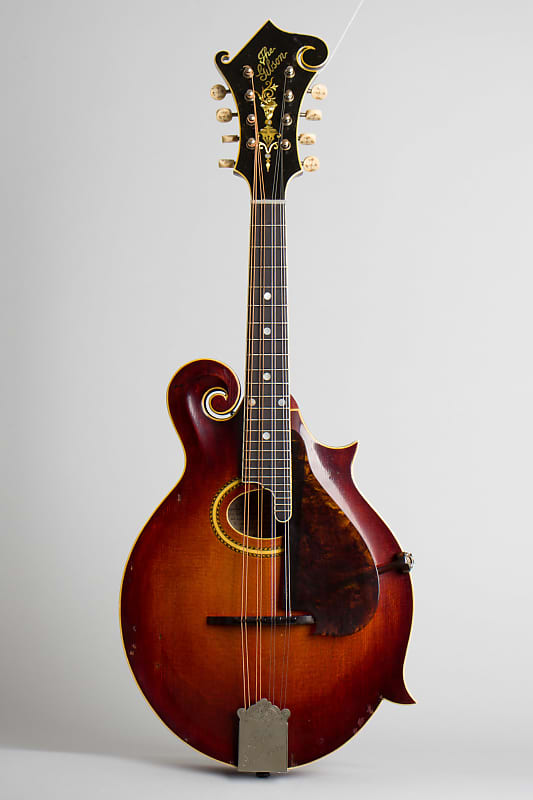

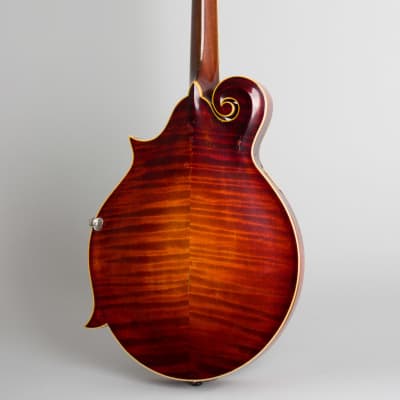
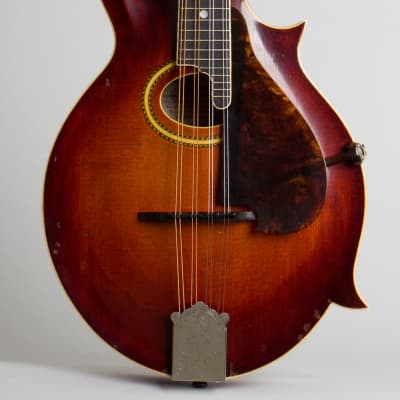
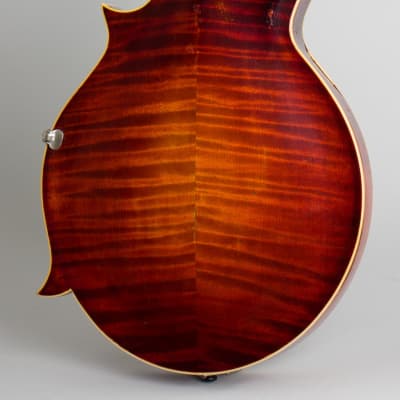
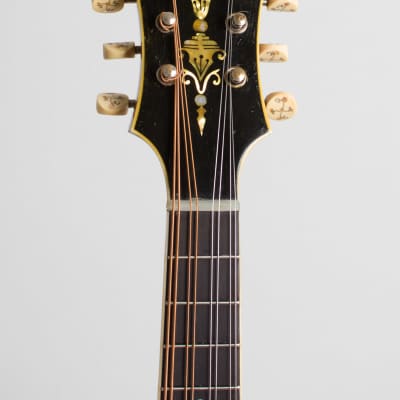
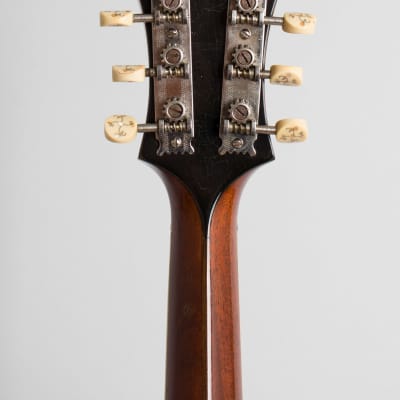
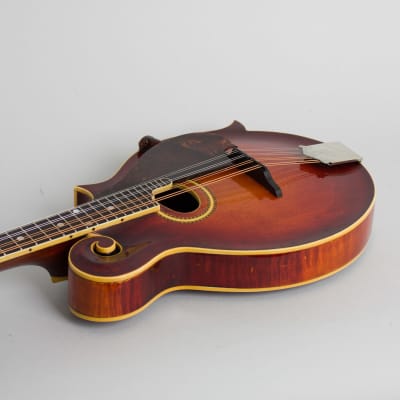
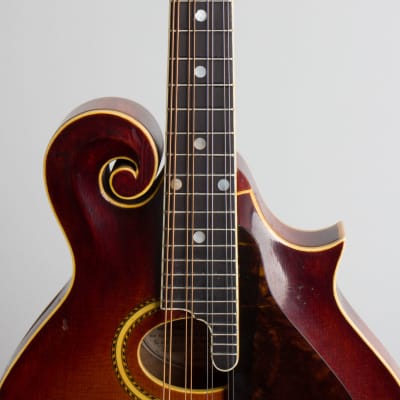
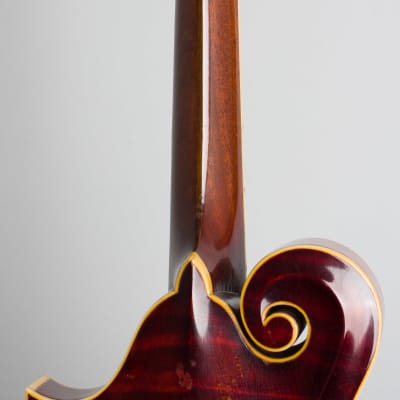
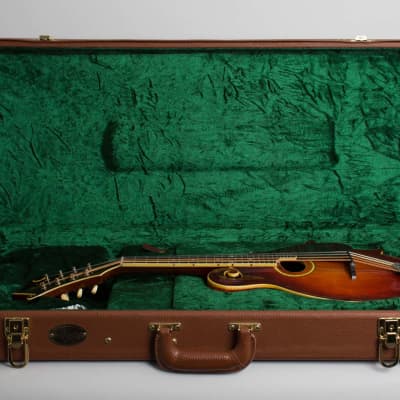
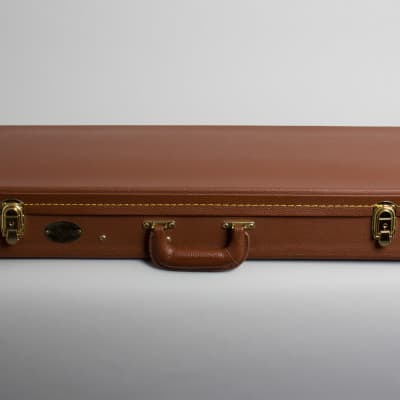
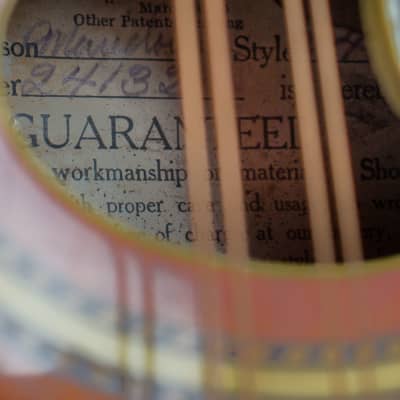
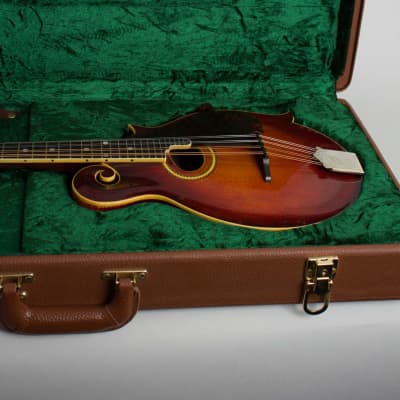
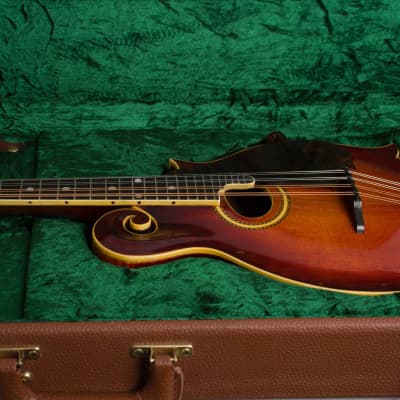
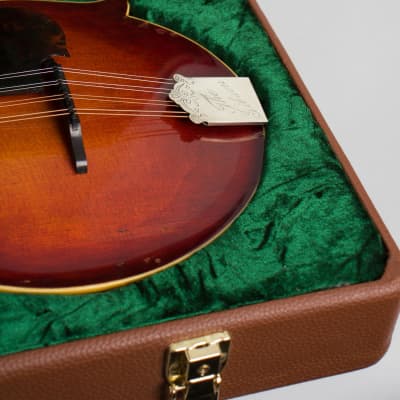
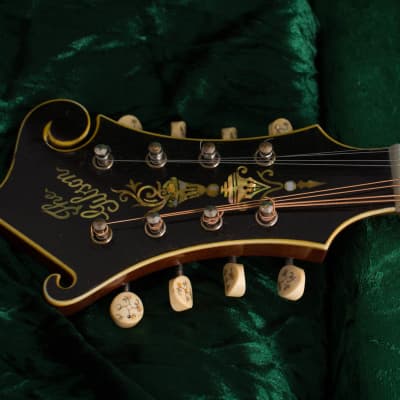
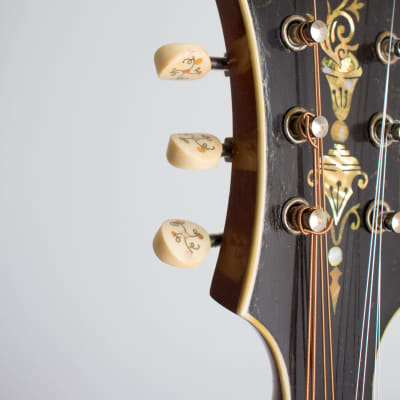
Gibson F-4 Model Carved Top Mandolin (1914), made in Kalamazoo, Michigan, serial # 24132, sunburst finish, maple back and sides, spruce top; mahogany neck with ebony fingerboard, brown tolex hard shell case. Just about 110 years ago this early two-point F-4 was Gibson's top of the line mandolin and company flagship instrument. This one has seen some use and repair with an old overspray but remains a lovely instrument nonetheless. This mandolin dates to early-mid 1914, a few years after the scroll-body F-4 had been fully perfected from its earlier 3-point body form. In either mode it was an utterly distinctive creation, by almost any standard the finest mandolin in the world in 1914. With a sharper neck angle the mandolins of this period offered more volume and a more powerful tone than earlier Gibsons. This combined with an aggressive sales policy insured the company was able to increasingly dominate the market for mando-family instruments through the 1910s. The single layer binding on the body, neck and headstock is grained ivoroid. The double-flowerpot pearl and abalone inlay on the headstock has a particularly dramatic ambered hue. Combined with the inlaid Handel tuner buttons this gives the F-4 a particular Art Nouveau grace and class. The 2-piece maple back has a pronounced flame figure as do the sides. The mahogany neck is fairly slim with a "V" profile. This instrument would have been the top choice for any virtuoso mandolinist in the just pre-WWI era, and today is still an iconic creation. This one has seen some adventures over well over a century of use but like a fine old violin is still a wonderful instrument to play.Overall length is 26 in. (66 cm.), 10 in. (25.4 cm.) width, and 1 1/2 in. (3.8 cm.) in depth, measured at side of rim. Scale length is 14 in. (356 mm.). Width of nut is 1 1/4 in. (32 mm.). This F-4 shows some wear and repair from over a century on Earth but looks, plays and sounds lovely. There is a very old and thin clear lacquer overspray over the original varnish finish over the entire instrument, which looks to have been done many decades ago. This finish shows noticeable checking along with some random chipping and a collection of mostly minor dings, dents, and scrapes. When the overfinish was done a subtle shading was added to the outer edge of the top, not quite as neatly done as the original hand-rubbed sun burst but not intrusive. There are dings and dents mostly around the perimeter of the top but virtually none of the common pickwear. There is a typical scroll repair to the headstock, solidly done but not as neatly as some. A small section of the back center seam looks to have been resealed, as is typical a couple of spots along the upper back/side seams show signs of re-gluing long ago. There are no cracks to the top or sides. The hardware is original and complete including the tuners, multi-saddle bridge and tailpiece and even the oft-missing celluloid pickguard and clamp bracket are still intact. The fingerboard has been trued and refretted with appropriate wire, the original pearl nut is present but slightly lowered. This a very sweet and enjoyable mandolin to play with a sparkling sound and comfortable action. It lives in a modern rectangular HSC. Overall Very Good + Condition.
Reverb Buyer Protection
Reverb has your back if your item is lost, damaged, or doesn't match its description. Simply report any issues within 7 days and we'll help you get a full refund.Learn more about Reverb Buyer Protection.
| Listed | 9 months ago |
| Condition | Very Good (Used) Very Good items may show a few slight marks or scratches but are fully functional and in overall great shape.Learn more |
| Brand | |
| Model |
|
| Finish |
|
| Categories | |
| Year |
|
